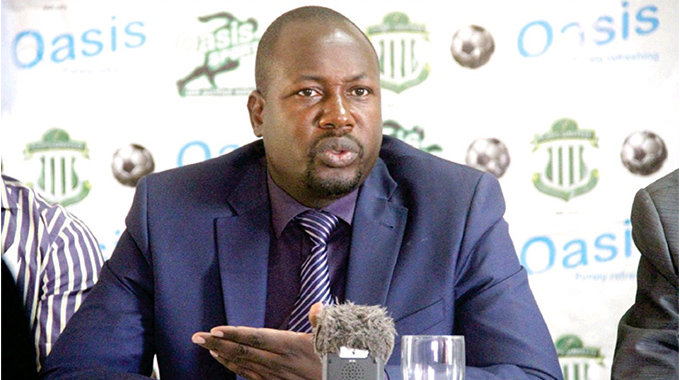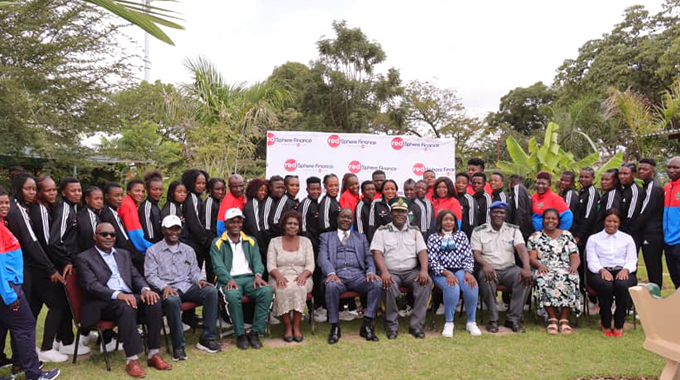Goal drought or tactical renaissance?

Innocent Kurira, [email protected]
IN the realm of local football, a fascinating trend has emerged among coaches, as they delve deeper into the intricacies of positioning and experiment with different systems on the field. Gone are the days when traditional tactics ruled the roost.
The modern coach now favours the deployment of false nines and inverted wingers, ushering in a new era of tactical innovation.
However, one cannot help but wonder if this shift in approach has contributed to the dwindling number of goals witnessed in the local premiership in recent years.
A palpable concern has gripped almost every coach in the Castle Lager Premier Soccer League regarding their team’s conversion rate.
A closer look at the statistics reveals that Ngezi Platinum currently leads the goal-scoring charts this season with a tally of 17 goals after 11 rounds of fixtures. Hot on their heels is Bulawayo Chiefs, the second-highest scoring team in the league with 16 goals.

Mkhokheli Dube Zebra
Excluding own goals, the league has witnessed 98 different players finding the back of the net, accumulating a total of 165 goals by the end of week 11.
Fortune Binzi from Manica Diamonds sits atop the goal-scoring charts, boasting an impressive eight goals to his name. He is followed closely by Brighton Makopa from Hwange and Takunda from Benhura Ngezi Platinum, both with five goals apiece.
A staggering realisation dawns upon us when we consider that no player in the last decade has managed to breach the elusive 20-goal mark.
This feat, which has eluded Zimbabwean players for over a decade, now appears insurmountable. The last individual to accomplish such a remarkable feat was Norman Maroto, who etched his name in history by banging in 22 goals for Gunners in 2010.
Last season, William Manondo emerged as the golden boot winner, amassing a respectable total of 17 goals.
Former Highlanders striker Mkhokheli Dube weighs in on the matter, expressing his belief that the systems employed by modern-day coaches are to blame.
“Do we have the right kind of players to suit the formation we use? I have witnessed certain teams fielding seven defensive players in a game.

Brighton Makopa in action
Where will the creativity and goals come from with such a defensive approach?” he questions.
Dube goes on to contemplate whether coaches truly harness the strengths of their talented strikers, providing them with an environment conducive to unleashing their full potential.
Legendary figures of Zimbabwean football, such as Highlanders and Warriors striker Zenzo Moyo, echo Dube’s sentiments. Moyo asserts, “Strikers are born.
A natural striker can turn even a mistake into a goal. Modern-day coaches experiment excessively, leading to a scarcity of natural goal-scorers in their teams.”
He further elaborates on the prevalence of systems that do not prioritise a classic centre forward, akin to Erling Haaland at Manchester City, resulting in a less convincing conversion rate.
Midfielders are often thrust into centre forward roles, diluting the potency of the attack.
Collin Nyambiya, a former winger for Highlanders, Railstars, and Shabanie Mine, emphasises the dearth of scoring opportunities being created for strikers.
He laments, “We are not witnessing enough chances being carved out. Midfielders no longer dart down the flanks to create clear-cut opportunities.
The defensive approach to the game could also be a contributing factor, or perhaps the defenders have significantly improved in recent times.”
Football coach Kudzayi Mhandire posits an intriguing perspective, asserting that scoring prowess cannot be taught. He believes that the current crop of strikers lacks predatory instincts and bravery, emphasising the need for players to take risks and seize opportunities.
Mhandire also acknowledges the cautious nature of modern-day coaches, who prioritise results over entertainment.
He highlights that coaches tend to be too cautious with their formations and systems, which hampers the creativity and attacking flair of the team.
In the annals of Zimbabwean football history, one name stands out as the epitome of goal-scoring excellence. Moses Chunga, a revered figure for both Dynamos and the national team, holds the record for the most goals scored in a single season.
The remarkable feat took place in 1986 when Chunga found the back of the net an astounding 46 times. Such a tally remains unmatched in the post-independent era of Zimbabwean football.
Chunga’s exceptional year was marked by ten double strikes and three hat-tricks, earning him the prestigious Soccer Star of the Year award. The runners-up on that Soccer Stars podium were Mercedes Sibanda and Boy Ndlovu.
Another player who made a significant impact in a short period was Zenzo Moyo, a lethal striker for Highlanders in the year 2000.

William Manondoo
By mid-season, Moyo had already scored an impressive 22 goals before making a move abroad to join his new club, Olympiakos Nicosia in Cyprus. His goals played a pivotal role in helping Highlanders clinch the league title with a two-point cushion over their now-defunct town rivals, AmaZulu.
The significance of goal difference cannot be overlooked, and in 2000, Highlanders boasted a formidable advantage in that department.
Much credit went to Moyo, who, despite playing only halfway through the season, emerged as the Top Goal Scorer and played a crucial role in his team’s triumph.
Reflecting on the more recent past, the top scorer of the 2008 season was Evans Chikwaikwai, who left an indelible mark by netting an impressive 23 goals.
As the quest for goals and entertainment intensifies in the local premiership, coaches and players alike are grappling with the challenges posed by modern tactics and systems.
The balance between defensive solidity and attacking flair remains elusive, and the scarcity of natural-born goal-scorers has become a pressing issue.
While the pursuit of results is understandable, the artistry and thrill of the game should not be sacrificed in the process.
Strikers yearn for the chance to showcase their instincts and bravery, while midfielders should be encouraged to create more opportunities.
Only by striking the right balance and creating a conducive environment can Zimbabwean football witness a resurgence of prolific goal-scorers and enthralling matches that captivate fans across the nation.
@innocentskizoe












Comments